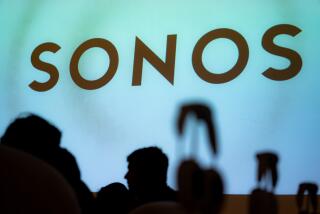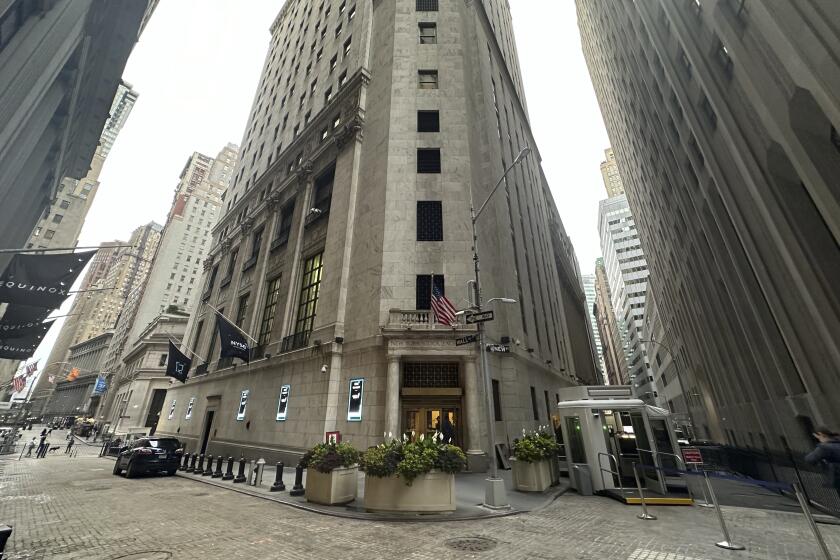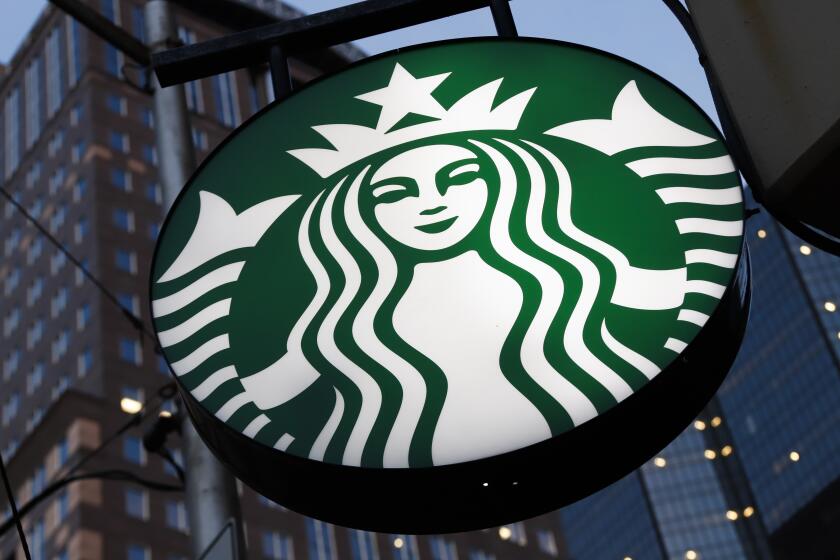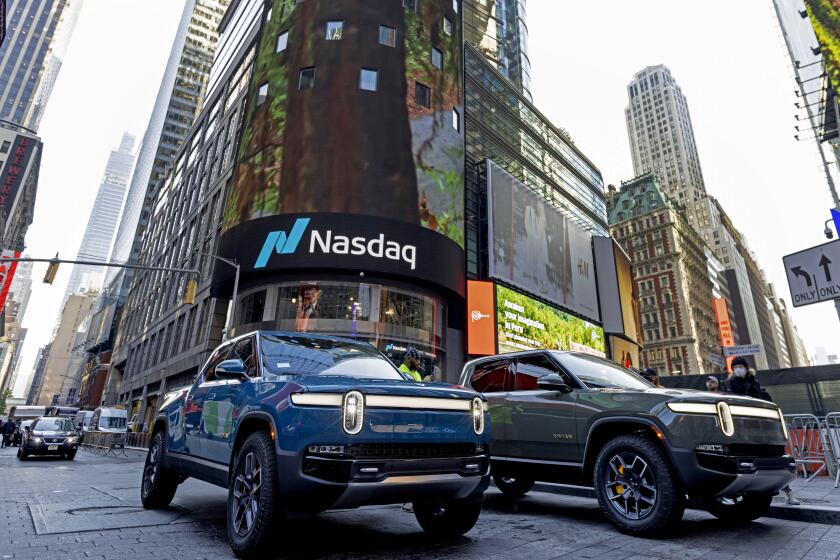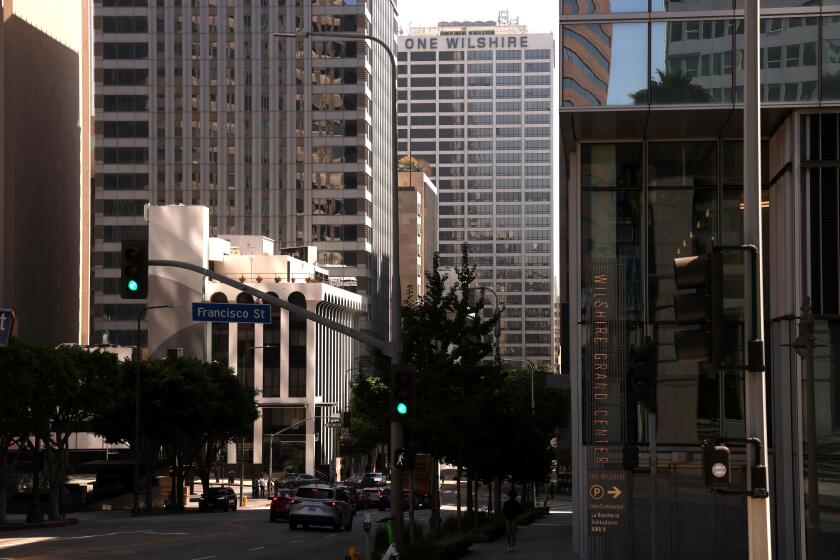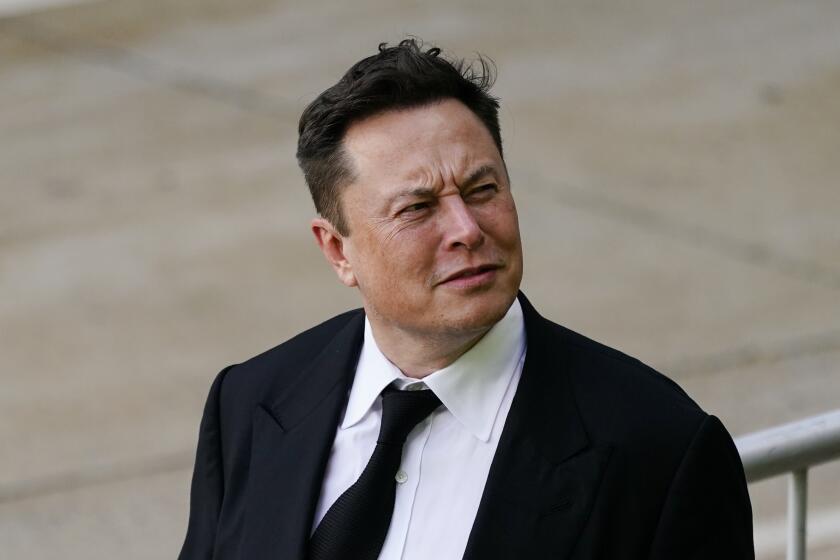Behind the MCA-Disney Tour War in Florida : As rival projects near completion, Universal is claiming that its studio tour designs were unfairly ‘borrowed’
On May 1, the first tourists are scheduled to walk through the gates of the Walt Disney Co.’s new studio tour theme park outside Orlando, Fla. About a year later, tourists will be able to drive 12 miles from the Disney attraction to MCA’s new Universal Studios-Florida tour.
One ride that neither tour will advertise could perhaps be called “Tour Wars”--a business-competition roller coaster that the two companies have been on for almost five years. It has been expensive and not much fun for the executives involved. In fact, it has been downright bitter--turning former friends at the top levels of Disney and MCA into corporate adversaries.
The fight involves two of the world’s largest entertainment companies and three top, high-profile executives: Michael Eisner, the chairman of the Walt Disney Co.; and at MCA, President Sidney J. Sheinberg and Chairman Lew Wasserman. The stakes are equally high profile--a combined $1 billion is being invested in Florida alone.
Disney, according to one source, is spending $550 million on the Disney-MGM Theme Park. (MGM is not a partner in the tour. Disney has licensed MGM’s name and some of its entertainment properties.) That’s an increase from the $300 million that Disney originally announced it would spend. The company has refused to disclose any new figure.
MCA, parent company of Universal Studios, says that $500 million is being spent to build its tour, up from the originally projected $200 million.
The Universal Studios Tour in the San Fernando Valley’s Universal City has been unchallenged as a studio tour--nobody else has one in operation. And MCA apparently expected no competition in 1981 when it bought land near Orlando for its second studio tour.
In 1985, MCA was shocked when Disney Chairman Eisner announced that his company would build a Florida movie studio and tour at the already successful Disney World.
MCA claims that Disney co-opted its plans for Universal Studios-Florida in an attempt to delay the MCA project or drive it from Florida altogether. Said MCA President Sheinberg: “When it came to our horrible realization that they (Disney) were going to do what they were going to do, there was a horrible sense of personal and corporate betrayal. “
Disney rejects the MCA contentions.
As MCA’s version of the story goes, Eisner may have become aware of MCA’s plans for a tour in 1981 when MCA sought a financial partner for its expansion into Florida.
At the time, Eisner was president of Paramount, the first company that MCA wooed as a potential financial partner. Sheinberg, citing “very strong personal and business relations” that existed between the two companies, said, “It would have been unthinkable that we would have discussed this first with any company other than Paramount.”
Eisner and Barry Diller, then chairman of Paramount and now chairman of 20th Century Fox, were Sheinberg’s “two best, most trusted friends,” an MCA source recalled.
Basic to MCA’s allegations is a July, 1981, meeting at which the company first presented its Florida plans. It was at this meeting that MCA says Paramount executives saw the plans for MCA’s studio tour.
Although Eisner and other Disney officials refused to give interviews for this article, a Disney spokesman in response to a written Times inquiry about MCA’s contentions denied “categorically: (a) that Disney ever stole, borrowed or misappropriated anyone else’s ideas for the Disney-MGM Studios--or that Disney will ever do so, or would have to do so; and (b) that Michael Eisner saw or discussed any plans or drawings of anyone else’s studio tour proposals before or after he came to Disney.”
To back its claims, MCA has now revealed for the first time its 1981 tour plans (previously shown only to potential backers), pointing out what it calls remarkable similarities between the Disney tour and MCA’s original design for Universal Studios-Florida.
Further, Jay Stein, MCA Recreation president and the company’s chief tour executive, says his company was forced to completely restructure its Florida tour and design new attractions in light of the similarities. The restructuring added “tens of millions to the cost,” Stein said. “It isn’t just the redesigning. It was the addition of new attractions and shows, expanded streets and restaurants, that were not contemplated in 1981. It all relates to the fact that Disney took what we had, and we had to fish or cut bait.”
Stein and MCA Executive Vice President Barry Upson maintain that 65% to 70% of the elements on Disney’s tour are “borrowed” from Universal’s ’81 plans.
They say that the most striking similarities exist between Disney’s Catastrophe Canyon, an adventure ride segment on its backlot tram tour, and parts of MCA’s original plans that include an earthquake ride. (MCA tour designers originally developed the concept of an earthquake attraction for the Florida tour; the company recently opened a quake ride at its tour in Universal City, but the features of this one differ from the company’s first ideas.)
Disney’s promotional literature says Catastrophe Canyon tram riders “will find themselves looking up canyon walls, a vacation experience never before offered Florida vacationers. But the setting is as ominous as it is unusual. Ground tremors quickly swell into a full-fledged earthquake. A power pole falls onto a railroad tank car, starting a fire. A bridge on which the car rests collapses. Explosions soon follow and fire is everywhere. Flames soon climb up the side of the hill toward a large oil-storage tank at the top of the mountain, igniting an enormous fire ball.” Finally, “a giant wall of water comes rushing down the hill toward the tram, a major league flash flood. . . . “
MCA’s 1981 Universal-Florida plans, illustrated in a slide show and large colored renderings, show a tram in “Hollywood Canyon” on the backlot Florida tram tour. As tremors shake the tram car, power lines snap and the ground beneath cracks. A dam in the “Hollywood Hills” above also cracks, sending down a wall of water. Later, a bridge beneath the tram collapses and the tram pulls into an oil field (a scene from the John Wayne movie “Hellfighters.”) A truck slides on oil, crashing into a tank, causing a fiery oil well explosion. (See accompanying story for other ride descriptions.)
According to Universal’s former vice president for shows and attractions, Terry Winnick, the ideas for an earthquake, dam break/flash flood and oil well explosion were created by a handful of MCA tour designers and executives, including himself. None of the designers involved worked at Disney before or after the Universal tour was developed in the mid-’70s, Winnick said.
By the time MCA began showing the plans to potential financial partners in 1981, “We had six or seven years of hard, hard work in,” Winnick said. He left MCA in 1982 to become general manager of the San Diego Zoo and now is an independent theme park consultant. Universal Studios-Florida is one of his clients.
Asked why MCA chose to disclose the old tour plans, given that its focus now is on its new attractions and new tour, Stein said, “I just think that when you work as hard as we did in trying to get this program and studio tour off the ground, and this is a project that I have worked on for 20 years, then you see someone come along and take your ideas and . . . incorporate them in their project and say that this was their idea, (that) this was conceived by the (Disney) Imagineers, that just makes me angry.”
----
According to MCA’s records, the company presented its Florida plan to Paramount executives on July 29, 1981, in the Jack Webb Bungalow, a small gray stucco building at the foot of the “Black Tower,” the MCA executive office building overlooking the Universal Studios lot in Universal City.
For about two hours, the group viewed a slide show that moved through the planned tour’s attractions, street by street. The slide show was supplemented by blueprints, color renderings and live presentations by MCA staffers that covered such minutiae as the rate of return on investment through the year 2004 and the probable impact of any future gasoline shortage on a family of four planning an automobile vacation to Florida.
Exactly who was at the presentation is not clear. There is no dispute that Sheinberg hosted the meeting and that Paramount Chairman Diller and Arthur Barron, then executive vice president of Paramount and now a semiretired Gulf & Western executive, were there.
While Disney denies that Eisner ever saw any plans during this period, there is some uncertainty among those who attended about Eisner’s presence.
Said Peter Kingston, then an MCA development executive and now president of South Pasadena-based Day Ray Products: “Michael Eisner was very definitely there. That’s the only time I’ve ever met the man. He asked very intelligent questions. I was very impressed by his grasp of the subject and equally his interest in the subject. He wasn’t there to waste his time.”
Diller would not comment on who had been there, beyond confirming his own presence. Barron said through a spokesman that he wasn’t sure if Eisner had been there.
Sheinberg and Stein said they believe that Eisner had been there but cannot actually recall his presence. Sheinberg said that in those days he saw Diller and Eisner “all the time,” and he added, “It’s tough to remember when you saw people that you saw all the time.”
Stein’s agenda shows Eisner as having been scheduled to be present. But there is no written record of who actually attended.
“Whether he (Eisner) was there or not and shown these materials or not, his company wound up doing exactly what we were doing in large part in 1981,” Stein said. “He cannot disassociate himself from the responsibility that his company did wind up doing what we were supposed to do.”
Sheinberg added: “You’re going to have to work awfully hard to convince me that he (Eisner) didn’t know about this (MCA’s plans). That’s ridiculous. He was a member of the inner circle at Paramount.”
When Paramount turned down MCA’s partnership proposal a few weeks after the presentation, the rejection didn’t dampen corporate or personal friendships. MCA believed that its proposal had been squelched by the late Charles Bludhorn, then chairman of Paramount’s parent company, Gulf & Western.
MCA then approached, without success, a number of entertainment industry and financial powers including RCA, Taft Entertainment, Lorimar Productions and the wealthy Bass brothers of Texas.
“I think there was a kind of feeling ‘why is MCA looking for a partner if this is so good? . . . why don’t they do it themselves?’ ” Sheinberg said. “We had simply decided that we did not want to expand (into Florida) all on our own credit.”
----
Fast-forward almost four years to February, 1985. It’s been four months since Michael Eisner left Paramount to become Disney chairman. At his first meeting with Disney stockholders, Eisner announces his intention to build a studio tour in Florida.
Sheinberg was quick to complain to the media that Eisner had been privy to Universal’s plans. Eisner responded, in a Times story, that the presentation to Paramount had occurred “many, many years” ago. He also said that “when I arrived at (Disney), the studio tour was already on the drawing boards and had been for many years.”
Leaving aside any question of unfair copying of ideas, Sheinberg was outraged that Disney was going to do a Florida movie tour at all, “given the fact that they had been privy to all of this confidential information,” he said in a recent interview. “It’s like having discussions with a brother or a cousin. These kinds of disclosures are made in the strictest confidence. They are not made on the assumption that one day it is going to come up and bite you.”
Ironically, before Disney announced its plans for a Florida studio tour, Sheinberg and MCA Chairman Lew Wasserman saw Eisner’s arrival at Disney as the possible answer to MCA’s problem in finding a partner.
Sheinberg said that shortly after Eisner took over as chairman, he wrote a note to Eisner and Disney President Frank Wells, “at Mr. Wasserman’s suggestion,” proposing a meeting that would include discussion of a tour partnership.
Eisner and Wells rebuffed the invitation. Sheinberg recalled: “Ultimately, we were informed that they might want to do one of these tours themselves and they did not want to be accused of somehow, whatever the word was, stealing or acting improperly, if we had a meeting and they later decided to go on their own. That signal really surprised us, to put it mildly. It was our first indication that they were off on a plan to do this.”
----
After MCA corraled a tour partner, Cineplex-Odeon, the tour war escalated, with salvos coming from Disney. (Cineplex-Odeon, a theater-chain company that is half-owned by MCA, signed on as tour partner in December, 1986. Cineplex last month sold its 50% stake for a large profit to a British entertainment conglomerate, the Rank Organisation.)
The Cineplex deal enabled MCA to finally break ground in Florida, in March, 1987.
Disney’s Eisner reacted quickly. In a BusinessWeek article that month, he said: “They (MCA) invaded our turf and we’re not going to take that without a fight.”
A few weeks later, Disney announced a plan to build a retail/entertainment complex in downtown Burbank, near Disney’s studios--and near Universal Studios.
The move struck at MCA’s heart, according to a former MCA executive. “If Disney drew off just 10% of MCA’s tour attendance here, that could almost wipe out the tour’s entire profit margin,” he said.
MCA fought the Disney/Burbank plan vigorously. Without identifying itself as corporate sponsor, it funded a group called Friends of Burbank to campaign against the Disney/Burbank plan.
MCA also fired off two lawsuits against the City of Burbank, Disney’s partner in the proposed venture, accusing Burbank of giving Disney a sweetheart deal.
Disney later dropped the plan, saying it was financially unfeasible.
Curiously, as the Burbank skirmish was heating up in July, 1987, Sheinberg and Eisner met about combining attractions in Florida.
“We did have meetings designed to see whether or not we couldn’t combine these attractions when it became patently clear what they (Disney) were going to do,” Sheinberg said. Both sides had agreed not to reveal details of the meetings, he added.
However, sources at MCA said that Disney offered to give MCA a royalty but no active partnership in a combined tour and that MCA turned down the offer.
“My feeling is that Orlando is not too small to handle both tours,” said financial analyst Lisbeth Barron, who covers the entertainment industry for McKinley Allsopp, a New York-based investment banking firm. Barron believes that the Disney tour could attract 5 million customers in its opening year and that Universal Studios-Florida could draw 4 million its first year.
But peaceful coexistence seems out of reach at the moment.
“This is not the same as two companies competing for a movie or TV slot,” Sheinberg said. “(The studio tour business) had been something we had developed over 25 years. This business doesn’t exist anywhere else in America to my knowledge.”
----
On May 24, 1985, Eisner wrote a letter to Sheinberg and MCA Chairman Wasserman. The letter was in part a denial of Eisner’s involvement in killing a deal to recruit a Florida partner for MCA. But the other part of the letter was an explanation and a truce offering.
Eisner’s letter spelled out his reasons for rejecting a Disney/MCA tour partnership, listing Disney’s advantages in Florida, including “our land, existing infrastructure, marketing commitment, hotels, monorail, research and development organizations . . . and sources of financing.”
The Disney chairman’s letter also sought to reassure the MCA executives that “we do not want to hurt you.”
“If differences remain,” he wrote, “let us keep them private as befits our companies as members of the same industry.”
The appeal brought no lasting peace and silence. In a Manhattan Inc. magazine article in July, 1988, Sheinberg was quoted as calling Eisner an “egomaniac” with “a failure of character.” Sheinberg said he was misquoted in the magazine article but allowed that some of his comments were “ill-advised” and may have been interpreted “in many people’s minds” as “sour grapes.”
Given MCA’s strong feelings about Disney and MCA’s history as a litigious corporation, some observers wonder why the company hasn’t sued Disney.
Said Sheinberg: “I can’t make a statement on the specifics of the designs until I have personally walked through the (Disney) park.”
He said that MCA may yet sue, adding, “Disney knows they’re being watched carefully.” Watched for what? “For everything,” he replied.
More to Read
Inside the business of entertainment
The Wide Shot brings you news, analysis and insights on everything from streaming wars to production — and what it all means for the future.
You may occasionally receive promotional content from the Los Angeles Times.
